38 nutritional value on food labels
Learn How the Nutrition Facts Label Can Help You Improve Your Health Nutrients Required on Label Vitamin D and potassium values are required. Calcium and iron will continue to be required. Vitamins A and C will no longer be required but can be included on a voluntary basis. Slight Decrease in Sodium Allowance The daily limit for sodium decreased slightly from 2,400 mg per day to 2,300 mg per day. Understanding Nutrition Facts on Food Labels - WebMD The label tells you it has no fiber or any of the key nutrients: vitamins A or C, iron and calcium. You'll notice different units of measurement on food labels. Many of the nutrients are measured...
Nutrition Fact Labels For Homemade Food Products - SheetLabels.com Nutritional Values. The second step in creating your nutrition label is adding up all of the nutritional value information that you listed out in the first step. Add up each separate nutrient by itself, for example, add all of the calories together, then carbs and so on. List all of this info out separately as well because there is even more to ...
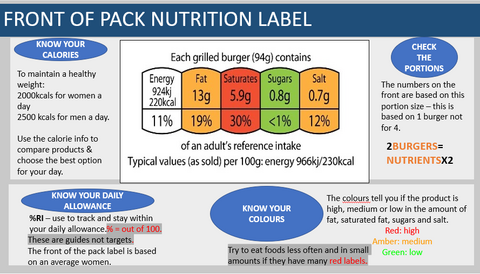
Nutritional value on food labels
The Importance of Reading the Food Label and Nutritional Facts The Importance of Reading Food Labels This information does two things: The Basics of Reading a Nutrition Label 1. Serving Size 2. Calories per Serving 3. Percent Daily Values 4. Nutrient Contents 5. Vitamins & Minerals 6. Ingredient List Putting it All Together Reading food labels makes a big difference when it comes to your family's health. Reading and Understanding Food Labels and Nutrition Info - Beaumont Health Carbohydrates are the main source of energy during most physical activity. Carbohydrates should comprise 50-75 percent of your calories, or about 200-500 grams per day depending on your caloric requirement. Fiber may play as much of a role in disease prevention as fat. Aim for at least 30 grams per day. Food labels - NHS Nutrition labels are often displayed as a panel or grid on the back or side of packaging. This type of label includes information on energy (kJ/kcal), fat, saturates (saturated fat), carbohydrate, sugars, protein and salt. It may also provide additional information on certain nutrients, such as fibre.
Nutritional value on food labels. The Basics of the Nutrition Facts Label A food item with a 5% DV of fat provides 5% of the total fat that a person who needs 2,000 calories a day should eat. You may need more or less than 2,000 calories per day. This means that you may need more or less than 100% DV that is listed on the package for some nutrients. Low is 5% or less. Nutrition Facts and Food Labels - Eatright.org Get to know the basics of the Nutrition Facts label, and understand the parts and pieces, from serving size, total calories and fat to percent of Daily Values. Teach Your Teen about Food Panels If decoding the information on a food package is a challenge for adults, think of how hard it is for teens who are just beginning to make choices for ... Food Labels: Fat & Cholesterol | Home & Garden Information Center The 2015 Dietary Guidelines for Americans recommends the following intakes of fat and cholesterol every day: total fat—20 to 35% of calories, depending on age and gender (65 grams for the 2,000-calorie intake level used in the Daily Value)*. saturated fat—less than 10% of calories**. trans fat— keep as low as possible. How to Read Nutrition Facts Label - Food Network The American Heart Association recommends no more than 100 calories from added sugar per day (about 6 teaspoons or 24 grams of sugar) for most women and no more than 150 calories per day (about 9 ...
Understanding Nutrition Labels - News-Medical.net The calorie information is the second part of the nutrition label. It states the number of calories present in one serving. For example, 1 serving of nuts contains 150 calories. If you consume 2... Food Labeling & Nutrition | FDA Food labeling is required for most prepared foods, such as breads, cereals, canned and frozen foods, snacks, desserts, drinks, etc. Nutrition labeling for raw produce (fruits and vegetables) and... Food Labels | CDC If you eat the whole thing, you are eating 8 times the amount of calories, carbs, fat, etc., shown on the label. Total Carbohydrate shows you types of carbs in the food, including sugar and fiber. Choose foods with more fiber, vitamins, and minerals. Choose foods with lower calories, saturated fat, sodium, and added sugars. Avoid trans fat. How to Determine the Nutritional Value of Food - FoodCrumbles Micronutrients. Keep in mind: foods are variable. Determining the nutrient content in three ways. 1) Analyze the contents in a lab. 2) Used published values from literature. 3) Calculate your nutritional value. Determining energy content is a simple calculation. Set conversion values. Calculation example.
How to Understand and Use the Nutrition Facts Label | FDA Dietary fiber, vitamin D, calcium, iron ad potassium are nutrients on the label that Americans generally do not get the recommended amount of. They are identified as nutrients to get more of.... Nutrient Claims on Food Labels | Home & Garden Information Center A food that provides 10% or more of the Daily Value for a nutrient per serving is a good source, while a food providing 20% is considered "high in" the nutrient. Choose several servings of foods that are "high in" or "good sources" of hard-to-get nutrients like calcium. Recommended amounts are the minimums you should consume daily. Food labels - NHS Nutrition labels are often displayed as a panel or grid on the back or side of packaging. This type of label includes information on energy (kJ/kcal), fat, saturates (saturated fat), carbohydrate, sugars, protein and salt. It may also provide additional information on certain nutrients, such as fibre. Reading and Understanding Food Labels and Nutrition Info - Beaumont Health Carbohydrates are the main source of energy during most physical activity. Carbohydrates should comprise 50-75 percent of your calories, or about 200-500 grams per day depending on your caloric requirement. Fiber may play as much of a role in disease prevention as fat. Aim for at least 30 grams per day.
The Importance of Reading the Food Label and Nutritional Facts The Importance of Reading Food Labels This information does two things: The Basics of Reading a Nutrition Label 1. Serving Size 2. Calories per Serving 3. Percent Daily Values 4. Nutrient Contents 5. Vitamins & Minerals 6. Ingredient List Putting it All Together Reading food labels makes a big difference when it comes to your family's health.
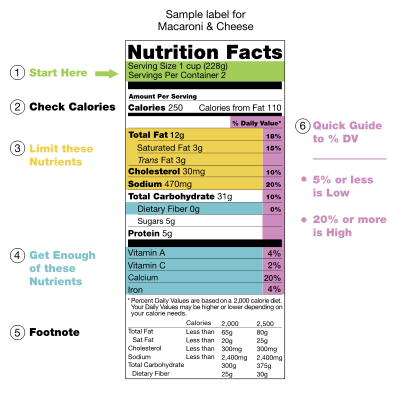
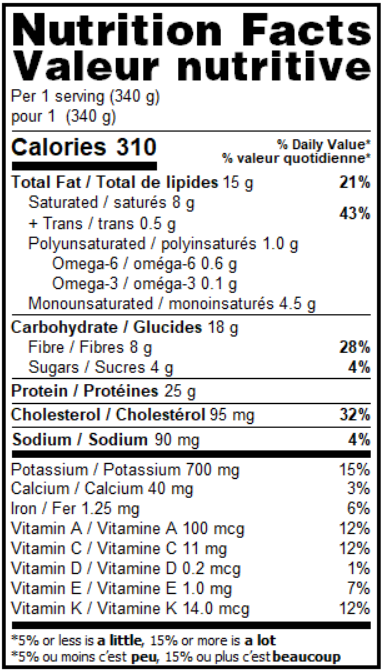




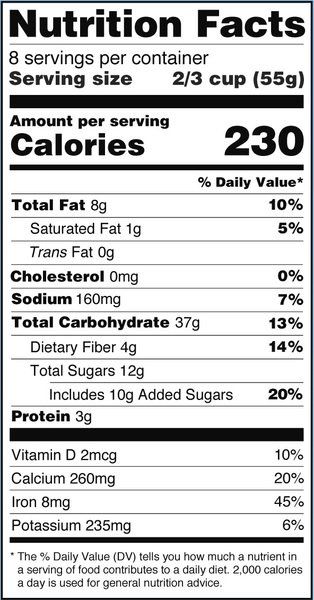



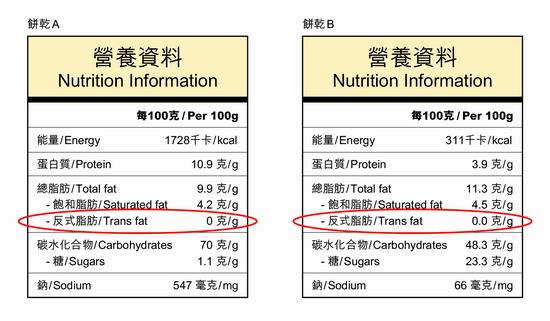

Post a Comment for "38 nutritional value on food labels"